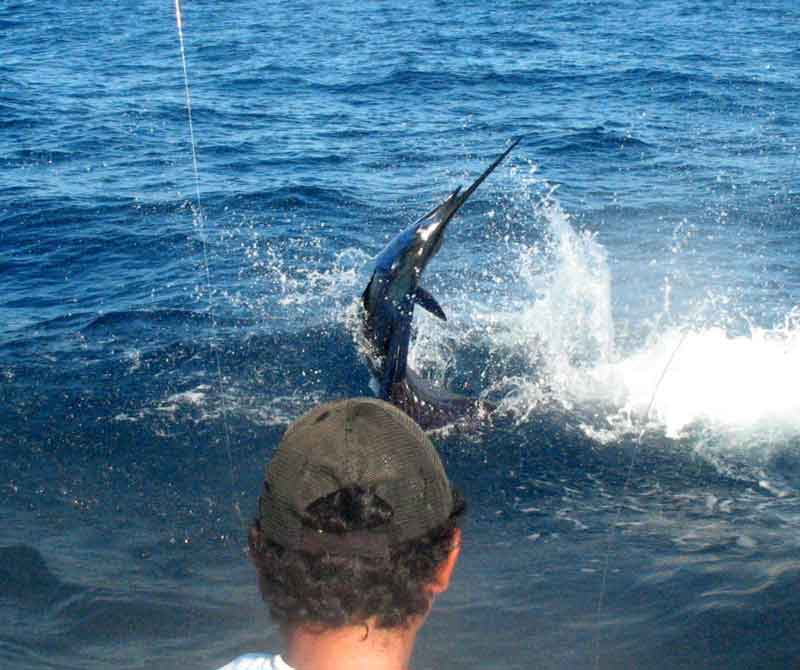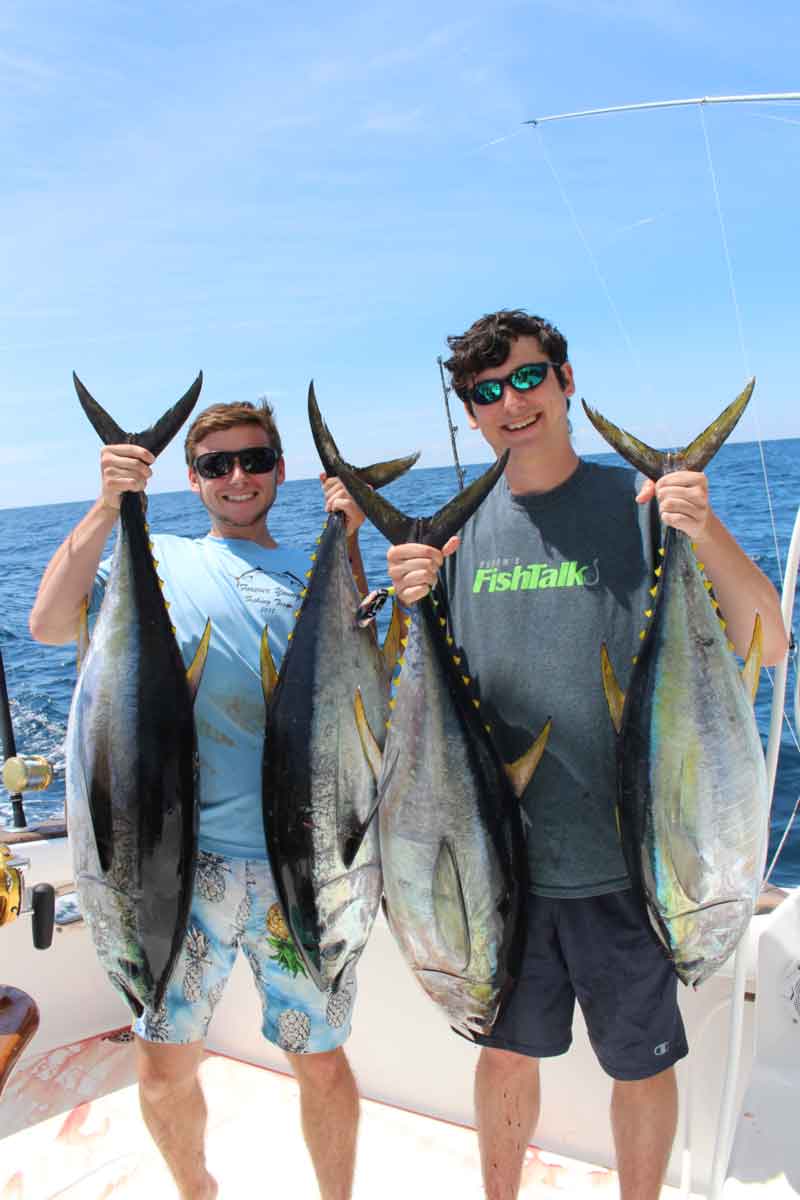Every angler’s definition of fishing success varies, but I’m inclined to believe that each would include the phrase “catch fish.” When an angler says, “it was a beautiful, relaxing day of fishing,” think we can all agree, that means, “I didn’t catch much.” Don’t get me wrong, any day offshore fishing with nice weather is enjoyable, whether you’re catching fish or not. But catching fish is WAY better than not. Here are a few tips that may help create success on those beautiful, relaxing days.

Offshore Fishing Preparation
When speaking at seminars I’ve always emphasized that preparation is the key to success. Crossing tasks off the “to do” list the night before makes for a less stressful early morning. Take ballyhoo rigging, for example. They can be rigged on the ride out to the canyons under the rigging station lights. But that unexpected early morning breeze that was not forecast can make this chore more difficult, especially if it is downright rough. Rigging the night before also allows the bally to be salted down, resulting in a more durable bait.
Besides rigging baits, all terminal tackle should be checked. Anything suspect should be replaced. Losing a quality fish because of leader fray from a previous white marlin bill or a stressed swivel that blew apart is heartbreaking. Hook points should be honed razor-sharp, then coated with a magic marker to prevent rust.
Then there is time that must be spent collecting information to decide exactly where to start fishing. That edge on the 50-fathom line that produced a good bite two weeks ago may be totally void of fish tomorrow. There is no guarantee from one day to the next that fish will still be on location, let alone hungry. Check the latest coastal fishing reports for up to date bite information. Also, when picking up your bait at the local tackle shop, pick the clerk’s brain (they hear of bites all the time) to find even more info on recent bites. All this then gets combined with SST charts to help you decide where to point the bow in the morning.
Also prepare and leave nothing to chance when it comes to the boat. Fishing 60-plus miles off the coast has its risks. Speaking from personal experience, being broke down offshore stinks!
Offshore Fishing Skill
Skill is obtained through trial and error, but education and knowledge can be transferred into skill. There’s a pretty big learning curve when it comes to offshore fishing and talking with experienced anglers can offer insight. Such as what to do when that 600-pound blue marlin comes tight on a line. Learn the steps required for the bait and switch ahead of time. Commit them to memory for when that white marlin pops up on a teaser. In times of crisis, such as when that marlin surprises you or a school of tuna rises into the baits, we fall back on education, knowledge, and training to get through the situation. Especially when skill is at a minimum. Attend seminars, read books and magazines such as FishTalk, and gather as much information as possible. Go over the steps required for different situations until they’re embedded in your mind. It will be of benefit until skill is obtained thanks to years of offshore trips under the belt, and your reactions become second nature.
Offshore Fishing Ability
Ability and skill go hand in hand. Knowing how to handle a rod while fighting a monster bluefin takes skill, however, being able to do that for two or three hours to determine who wins the battle requires ability. The strain on arms, back and legs should not be underestimated. This is not to say that anglers should sign up at the local health club for intensive workouts, but physical limitations can have an effect on offshore success. In tournament fishing (where the rod cannot be passed off) the angler must be able to finish the battle.
Fighting the fish is only part of the story. The person at the helm needs to maneuver the boat to help the angler, backing down or swinging the transom to keep fish behind the boat. Whoever wires the fish should keep the leader down close to the water to prevent a marlin or mahi from jumping and throwing the hook. The person gaffing should know how to gaff and not slash the gaff wildly in missed attempts. You have to know to allow the reel’s drag to do its job; winding against the drag only causes more fatigue. And adjust the fighting belt and harness, so the angler’s back is straight and not hunched over while the battle rages on. Ability comes with experience—and staying in somewhat decent physical condition.
Finding Opportunity Offshore
Captain Josh Ruskey says it best: “make the most of every opportunity.” When that first line goes down, the crew can create opportunity by putting action into the other baits by jigging the other lines. Instead of catching one tuna, turn the bite opportunity into three or four tuna bloodying up the deck. If there’s a knockdown that doesn’t come tight, don’t keep trolling in a straight line, but swing around and work the area hard looking for additional bites. Watch the temperature gauge to see if there is a break and if so, double the effort. Pay attention to our feathered friends and if all the Shearwaters are flying in a certain direction point the bow that way, because birds can hear and see other feeding birds way off on the horizon long before anglers on a boat can. Capitalize on every opportunity that presents itself.

Part of making the most of opportunity also means being prepared for different fishing situations. You may pull out of the slip with intent of trolling for yellowfin, but be ready for when you run across that old pallet that has a school of mahi underneath. Sure, you can troll by the commercial fishing pot and catching a few mahi. But the savvy angler will make the most of this opportunity by having spinning gear on board rigged and ready to bail the pots and catch the whole school.
So, talking about opportunity brings us full circle, right back to preparation. Which only leaves one other topic: luck!
-By John Unkart, author of Offshore Pursuit and Saltwater Tales.